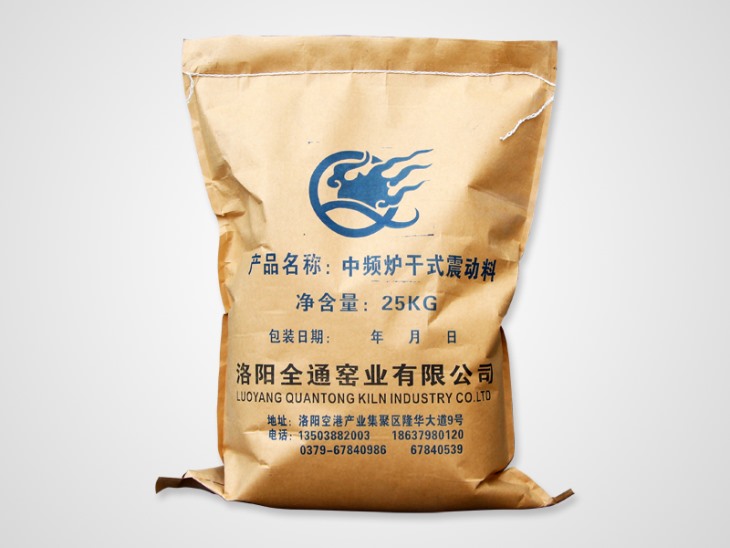Will the ramming material attack chemically?
ramming materialIt is a bulk material made of silicon carbide, graphite, electric calcined anthracite as raw materials, mixed with a variety of ultra-fine powder additives, and fused cement or composite resin as a binder. It is used to fill the gap between the furnace body cooling equipment and the masonry or Filling material for masonry leveling layer. Ramming material has good chemical stability, erosion resistance, wear resistance, shedding resistance, thermal shock resistance, and is widely used in metallurgy, building materials, non-ferrous metal smelting, chemical industry, machinery and other manufacturing industries. In use, chemical corrosion is necessary, which is mainly reflected in what aspects?
A. Corrosion of molten iron. The furnace lining is mainly corroded by carbon in molten iron. SiO2 plus 2C—Si plus 2CO corrodes and smelts gray cast iron, both in ductile iron, and more severe in smelting ductile iron.
B. Slag invasion. CaO, SiO2, MnO, etc. in scrap iron and steel are easy to form low-melting slag, especially CaO damage is the most. Therefore, attention should be paid to the cleanliness of the raw materials used. Try not to use it or use it in batches, and add less to each furnace.
C. Refractory slag. The high melting point slag is formed by the original aluminum. It reacts with the SiO2 in the furnace lining to form mullite (3A12O3-2SiO2), and the melting point is 1850 degrees Celsius. Therefore, to remove the original aluminum, Avoid the formation of high melting point slag.
D. Auxiliary agent. If slag coagulant or slag flux is used in the smelting operation, it will aggravate the corrosion of the furnace lining, so it should be avoided as much as possible.
E. Carbon accumulation. The carbon accumulation is on the ice face of the furnace lining, and even accumulates in the insulation layer. The reason for the carbon accumulation is that oil-impregnated wastes, such as chips, were used in the initial stage of furnace reuse, because the furnace lining was not fully sintered , CO penetrates into the back of the furnace lining, and the reaction of 2CO-2C plus O2 occurs. The generated carbon accumulates in the ice face of the furnace lining or in the pores of the thermal insulation material. When carbon accumulation occurs, the furnace body will be grounded and leaked, and even the coil will spark. .
The above is the introduction of chemical attack of ramming material

Previous: Do you know how to choose the correct acid furnace lining
下一条: Cause Analysis of Damaged Refractory Material of Submerged Arc Furnace Lining
Related Industry Knowledge
- Features and Benefits of Coil Clay
- What are the advantages of a good furnace lining
- Misunderstandings in the use of ramming materials in intermediate frequency furnaces
- Phenomenon analysis of failure of argon blowing of ladle permeable bricks and how to improve the rate of argon blowing
- Where is the consumption reduction and energy saving of breathable bricks reflected?
- How to improve the service life of intermediate frequency furnace lining
- Reasons for damage to intermediate frequency furnace lining and how to solve them
- The performance and advantages of breathable brick
- Analysis of Structural Characteristics of Dispersive Breathable Bricks
- The intermediate frequency furnace charge knotting process needs to pay attention to details sharing
- Do you know how to choose the correct acid furnace lining
- How to repair the electric furnace lining
- What should be paid attention to when lining the furnace
- Introduction of ramming material for intermediate frequency furnace
- Influence of medium frequency electric furnace lining material
- How to build furnace and sintering process for intermediate frequency furnace lining materials
- Intermediate frequency furnace ramming material
- How to properly maintain the furnace lining
- When the ramming material of the intermediate frequency furnace is in use, the molten steel has viscosity slag, how to solve it?
- Discussion on the Influence of Furnace Lining Material on the Production of Electric Casting Furnace


